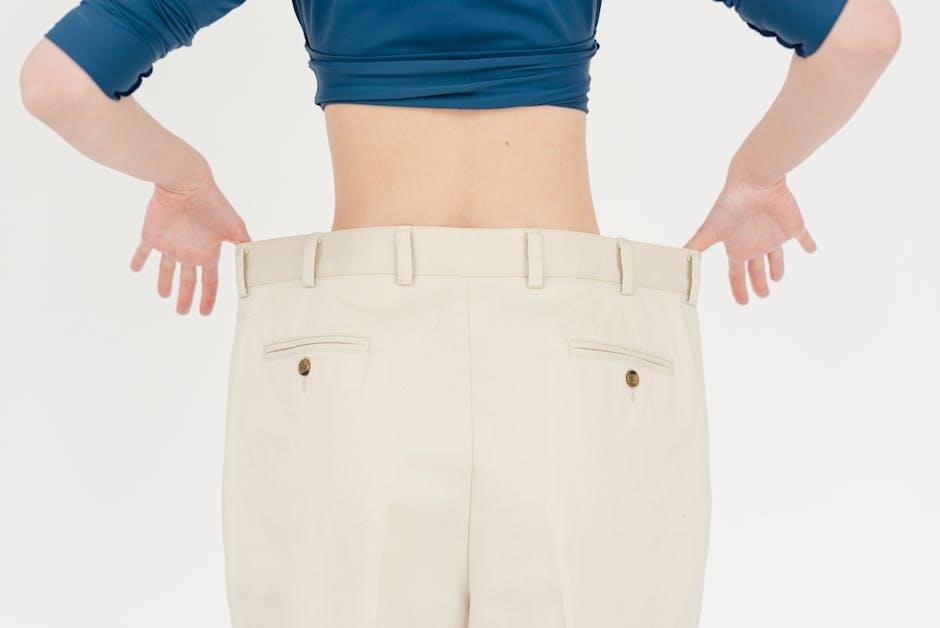Welcome to our comprehensive boot size guide, designed to help you find the perfect fit for comfort and performance. Whether shopping in-store or online, this guide covers everything from understanding size systems to measuring your feet accurately. Discover how to avoid common sizing mistakes and ensure your boots feel great all day long.
Importance of Proper Fit
A proper fit is essential for comfort, support, and performance. Ill-fitting boots can lead to discomfort, blisters, or even long-term foot issues. A well-fitted boot ensures your feet stay healthy and comfortable, whether for work, hiking, or casual wear. Proper fit also prevents excessive movement that can cause slipping or rubbing, ensuring optimal performance in any activity.
Investing time in finding the right size and style pays off in the long run, guaranteeing both functionality and satisfaction. A snug yet comfortable fit is key to enjoying your boots for years to come.
Common Challenges in Boot Sizing
Boot sizing can be confusing due to varying measurements across brands and styles. Different width options and the need for precise foot measurements often lead to uncertainty. Many people also overlook measuring both feet, as they can differ in size. These challenges highlight the importance of using reliable size charts to ensure a proper fit and avoid discomfort or poor performance.

Understanding Boot Size Systems
Boot sizes vary by brand and style, with widths from AAA (narrowest) to EEE (widest). Standard widths for men are D, while women’s are B. Sizes are available in US, EU, UK, and Mondopoint systems, ensuring accurate measurements for the best fit.
How Boot Length Sizes Work
Boot length sizes are determined by measuring the foot from the heel to the longest toe. Compare this measurement to size charts, considering style and brand variations. Proper length ensures comfort, with enough space for toes to move without pressure. Accurate measurement is key to avoiding too tight or loose boots.
Boot Width Systems Explained
Boot widths range from AAA (narrowest) to EEE (widest), each differing by about 5mm. Standard widths include D (medium) for men and B for women. Proper width ensures comfort and prevents blisters or slippage. Measure both feet, as width needs may vary, and refer to brand-specific charts for the best fit.

Measuring Your Feet for Boots
Accurate foot measurement is key to finding the perfect boot fit. Measure barefoot from the heel to the longest toe for length and across the widest part for width. Use a ruler or digital tools for precise results, ensuring comfort and proper sizing for your boots.
Manual Measurement Methods
For manual measurement, remove shoes and socks, then place your foot flat on paper. Trace the outline, marking the longest toe and heel. Measure the length and width using a ruler. Ensure the foot is relaxed and the measurement is taken while standing for accuracy. This method helps determine your boot size effectively.
Digital Tools for Foot Measurement
Digital tools simplify foot measurement using apps or online size calculators. Some apps scan your foot using a smartphone camera, while others use 3D scanners for precise sizing. These tools provide accurate boot size recommendations, eliminating manual tracing and ensuring a perfect fit. They are especially useful for online shopping, offering convenience and reliability.
Boot Size Charts and Conversion
Boot size charts compare US, EU, UK, and Mondopoint systems, ensuring accurate conversions. Use these charts to find your size across brands and regions effortlessly.
Conversion Between US, EU, and UK Sizes
Understanding size differences is key for accurate fits. US, EU, and UK sizes vary slightly, with conversions requiring careful alignment. For example, a US men’s size 9 often corresponds to EU 42 or UK 8.5. Use detailed charts to match your size across regions for consistency. Mondopoint systems also provide precise measurements for ski and specialty boots.
How to Choose the Right Boot Size
To select the perfect boot size, measure your foot length and compare it to the size chart; Ensure the boot fits comfortably, with adequate toe space and proper heel alignment. Consider boot width options for a snug yet comfortable fit. Try boots on while standing and check for support and flexibility to ensure the best fit for your needs.
Fitting Considerations
Proper boot fit is crucial for comfort and performance. Consider boot length, width, and heel fit to ensure a snug yet comfortable feel. Accurate sizing prevents discomfort and enhances durability, making it essential for both daily wear and specific activities like hiking or work.
Boot Length and Toe Space
Adequate boot length ensures toes have enough space to move without pressure. Measure from the back of the heel to the tip of the longest toe. A comfortable fit allows about 1/2 inch of space to prevent blisters and discomfort. Proper toe space is vital for both walking and standing, ensuring optimal comfort and flexibility.
Boot Width and Comfort
Boot width plays a crucial role in comfort and support. Common widths range from AAA (narrowest) to EEE (widest), with D being standard for men. Ensure the boot isn’t too tight or loose, as improper width can cause discomfort or blisters. Measure both feet, as they may differ, and opt for styles that accommodate your foot’s natural shape for all-day wearability.
Heel Fit and Movement
A snug heel fit is essential for comfort and performance. The heel should fit firmly without slipping or causing pressure. Proper heel fit prevents blisters and ensures stability while walking. A too-loose heel can lead to discomfort, while a too-tight fit may restrict movement. Aim for a balance that supports your foot naturally, enhancing overall boot comfort and functionality.
Popular Boot Styles and Fit
Explore the unique fit characteristics of work boots, hiking boots, and casual boots. Each style offers distinct features like support, durability, and comfort, catering to different needs and preferences for optimal performance and style.
Work Boots
Work boots prioritize durability and support, often featuring reinforced materials and protective toe caps for safety. Proper fit is crucial to prevent discomfort during long shifts. Ensure ample toe space, a snug heel, and consider the boot’s width for optimal comfort and performance in demanding environments. Measure accurately to avoid sizing mistakes and ensure reliability.
Hiking Boots
Hiking boots require a precise fit to handle uneven terrain and long trails. Choose a size that allows a little room for toes to wiggle without sliding. Consider the boot’s width and arch support for stability. Measure your feet while standing to ensure accuracy, and opt for a snug yet comfortable fit to prevent blisters during hikes.
Casual Boots
Casual boots blend style and comfort, making them versatile for everyday wear. When sizing, ensure a snug fit without tightness, allowing room for toes. Consider the boot’s width and heel fit for all-day comfort. Measure your feet while standing to ensure accuracy, and opt for a size that aligns with your usual footwear for the best fit.
Common Boot Sizing Mistakes
One major mistake is not measuring both feet, as they may differ in size. Ignoring boot width and trying boots at the wrong time can also lead to poor fit and discomfort, so always measure accurately and try boots when your feet are at their largest.
Not Measuring Both Feet
Failing to measure both feet is a common error. Feet often differ in size, and using a single measurement can lead to an ill-fitting boot. Always measure both feet separately and choose the larger size to ensure a comfortable fit. This simple step helps avoid discomfort and potential returns.
Ignoring Boot Width
Overlooking boot width is a frequent mistake. Boots come in widths like narrow, standard, and wide. Neglecting this can cause discomfort or blisters. Always check width options to ensure proper fit. A boot that matches both length and width provides optimal comfort and support for all-day wear.
Trying Boots at the Wrong Time
Timing matters when trying boots. Feet tend to swell during the day, so trying boots in the afternoon ensures a more accurate fit. Avoid early morning fittings when feet are smaller. This helps prevent choosing a size that’s too tight or too loose. Consistent timing aids in selecting the perfect boot size.
Trying Boots On In-Store
Trying boots in-store is crucial for ensuring a proper fit. Walk around, check comfort, and wear the same socks you’ll use. This helps you make an informed decision and avoid sizing errors. It’s a simple step that makes a big difference in your boot-buying experience.
When to Try Boots On
The ideal time to try boots on is in the afternoon, as feet tend to swell during the day. Wear the same type of socks you plan to use with the boots. This ensures a more accurate fit and helps you avoid discomfort later. Proper timing is key to finding the right pair.
How Boots Should Feel
A well-fitted boot should feel snug but never tight, allowing room for toes to wiggle slightly. The heel should stay in place with minimal slippage, while the midfoot and arch feel secure. Ensure there’s no excessive pressure or discomfort, as this can lead to fatigue or pain during wear. Comfort is key for all-day support and mobility.
Using Insoles or Orthotics
If you use insoles or orthotics, consider their thickness when trying on boots. They can affect the overall fit, potentially requiring a larger size. Ensure the boot feels comfortable with the insole and that your foot doesn’t feel cramped. Test boots while wearing your orthotics to guarantee proper fit and avoid discomfort or movement issues.

Troubleshooting Boot Fit Issues
Identify and resolve common fit problems like tight boots, heel slippage, or discomfort. Learn how to break in boots properly and address issues to ensure optimal comfort and performance.
Boots That Are Too Tight
If your boots feel too tight, consider stretching or breaking them in gradually. Wear thicker socks, use a shoe stretcher, or apply heat to soften the material. Ensure proper sizing by measuring your feet accurately and consulting size charts. Tight boots can cause discomfort and blisters, so addressing the issue promptly is essential for long-term comfort.
Boots That Slip at the Heel
Heel slippage can cause discomfort and affect performance. To address this, ensure proper fit by trying boots with the same thickness of socks you plan to wear. Consider using insoles or heel grips to reduce movement. Pay attention to boot height and lacing technique, as these can significantly impact heel stability and overall comfort.
Breaking In New Boots
Breaking in new boots is essential for comfort. Start by wearing them indoors for short periods to mold the material to your feet. Use a shoe stretcher or stuff boots with paper overnight. Apply leather conditioner to soften stiff areas. Gradual wear ensures a snug, comfortable fit without causing blisters or discomfort.

Online Shopping Tips
When shopping for boots online, ensure accurate sizing by using detailed size charts and customer reviews. Check return policies for easy exchanges if the fit isn’t right.
How to Shop for Boots Online
Shopping for boots online requires careful planning. Start by comparing your foot measurements with the size chart provided by the brand. Check customer reviews for insights on fit and comfort. Look for brands with flexible return policies, allowing easy exchanges if the size isn’t right. Measure your feet before ordering, as sizes can vary between brands.
Understanding Return Policies
When shopping for boots online, understanding return policies is crucial. Look for brands offering free returns or exchanges to avoid additional costs. Check the return window, typically 30 to 60 days, and ensure boots are in their original condition with packaging intact. This ensures a smooth process if the fit isn’t right.
Finding the perfect boot fit is essential for comfort and performance. This guide offers comprehensive tips to help you make informed decisions. Happy shopping for your next pair!
Final Tips for the Perfect Fit
Always measure your feet accurately and consider boot width for ultimate comfort. Try boots in the afternoon, as feet expand during the day. Ensure a snug fit without tightness and check for adequate toe space. Consider heel movement and arch support. Don’t forget to try boots while standing for the best fit.
Encouragement to Use the Guide
Take the guesswork out of boot shopping with our comprehensive guide. Discover your perfect fit, ensure comfort, and boost confidence. Avoid common sizing mistakes and find boots that match your lifestyle. Whether for work or leisure, this guide helps you make informed choices and enjoy the perfect fit every time.
